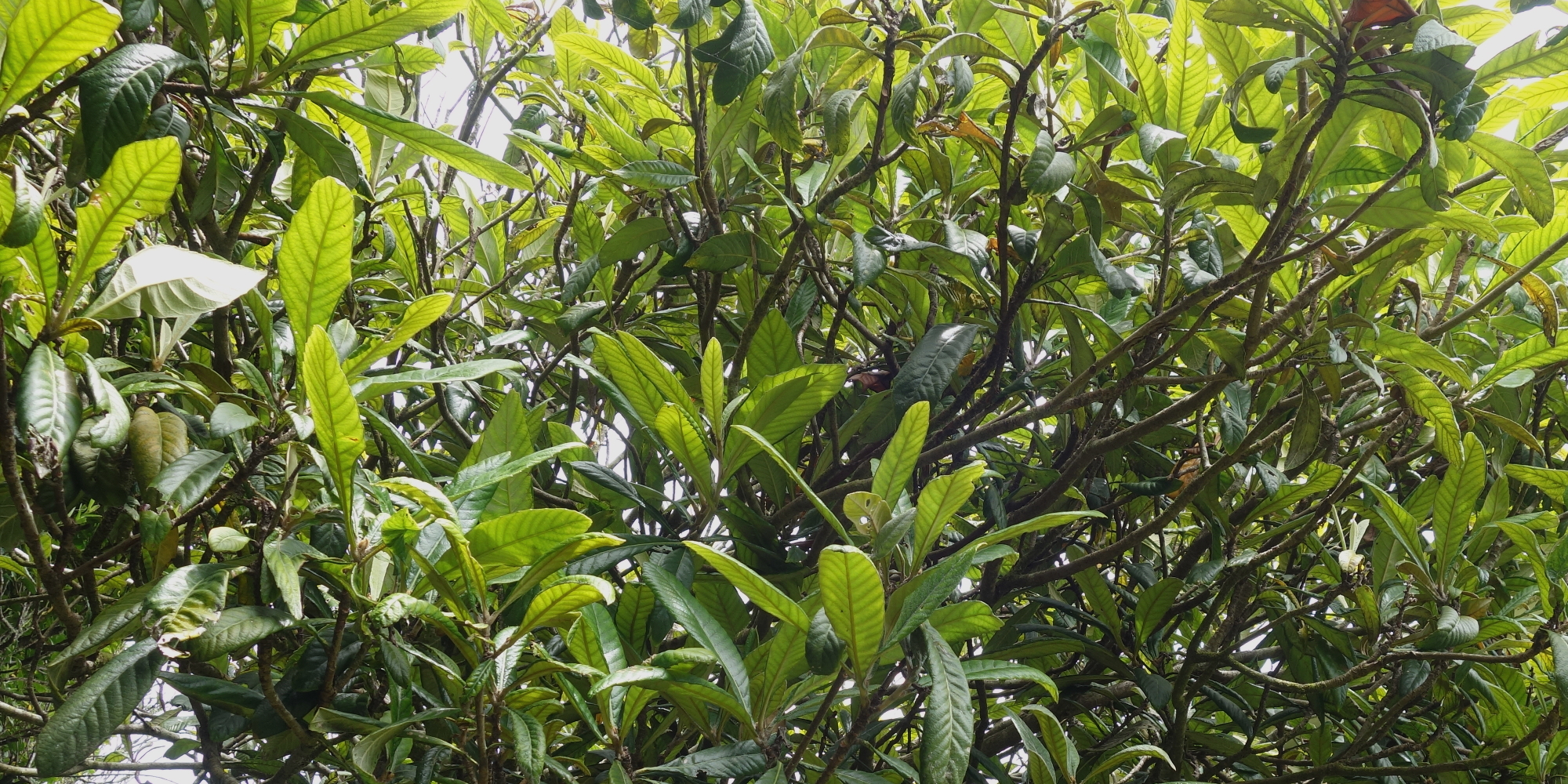Last Friday I was searching for old and wild fruit trees in Canterbury. As usual, much of the wild fruit trees that I come across are average at best. I was happily inspecting a plum, when out of the corner of my eye, I saw an unusual fruit tree, with small, bright yellow fruits. I thought it could be a hawthorn species (Crataegus). However, when I got closer, it was clear this was no Crataegus. No, this tree was a pear, unlike anything I’d ever seen before!



The tree was very large, approximately 90cm dbh, maybe 10-15m tall or so. I’d estimate very roughly it’s at least 100 years old, but I’m not very good at dating trees in Canterbury (more sun, less rain and different soils than what I’m used to).
The fruits had what’s called a ‘persistent style’, i.e. the flower structure (the star shaped part) is retained on the bottom of the fruit rather than falling off.

I smelled the fruits, and they had a strong pear fragrance. I took a small bite. They were very tannic (i.e. lots of tannins), yet still sweet and flavourful. Some of the fruits on the floor has begun to blet (i.e. turn brown), and these ones smelled strongly like marzipan!
I did a bit of research then and there, and I was able to quickly narrow it down to high confidence this tree was Pyrus pyraster. The ‘pyraster’ part as I understand is Latin for ‘pear star’ or ‘star pear’ (aster = star, pyr = pear), and certainly the persistent style is star-shaped, so that fits well. I have visited a few Pyrus collections at various arboreta in New Zealand, and had never seen one with fruit like this before – almost all other Pyrus species in New Zealand are essentially tiny, sour nashis, so that is another clue this was something unusual that I hadn’t seen before.
As an aside it’s worth explaining what a perry pear is. Just as there are dessert apples and cider apples, there are dessert pears and cider pears. The cider variants generally have higher acid and higher tannins, as this helps to keep the flavour of the fermented drink from developing too many volatile compounds, the ones that make it smell like rotten fruit. Cider prepared from mostly dessert varieties, tends to be of low quality as a result (and unfortunately, most cider in New Zealand is made from dessert fruit…). Pear cider is traditionally called perry, and so the ‘cider pears’ are actually called perry pears. Perry pears are usually hybrids between Pyrus pyraster, and Pyrus communis.
One last special thing to note about pears and perry, is that they contain sorbitol, which is a sugar alcohol with a sweet taste (it’s sometimes used as an artificial sweetener). Sorbitol is not metabolized by yeast, so when pear juice with sorbitol is fermented, it doesn’t taste completely ‘dry’ (i.e. low sugar), because the sorbitol will provide the sweet taste. This is in contrast to apple cider, where if you ferment it a bit too far, all the sugar is gone, so it doesn’t have a sweet taste anymore.
As a massive co-incidence, earlier that very day I posted some pear fruit from a very old West Coast pear tree (also over 100 years old), to Trevor at Teepee Cider as I thought they might be tannic enough to make perry with. Perry pears are incredibly rare in New Zealand, and Trevor has been looking for them for a number of years now. Only 5 hours later after posting some possible perry pears off, here I was finding the first wild perry pear I’ve ever seen, what are the chances?

It’s probably worth mentioning that Pyrus pyraster is also considered as a subspecies of the common pear – Pyrus communis subsp. pyraster. I find this rather confusing so have avoided this name, as in my opinion it’s much easier to talk about the wild relatives with a distinct species name, e.g. Malus sieversii is the main wild ancestor of Malus domestica.
When I got home I asked the folks from EFNEX for help confirming the identification, and the replies agreed this tree was likely Pyrus pyraster. I also talked to a few New Zealand experts, but haven’t yet had a clear answer as to whether there are other known pure-ish P. pyraster in New Zealand, although they did mention there are at least a few perry pears in New Zealand. Certainly there are none on inaturalist (just one misidentified feral pear), and I didn’t find any references in a few online lists of New Zealand trees.
So the next steps are to get permission to propagate this tree, and then work on propagation via both grafting and seedlings. I believe there is a whole world of new pear varieties that inherit the wonderful features of this one, such as smaller fruit in clusters, bright yellow fruit with smooth skins (no russeting), disease resistance, and new flavours, and so it would be great to see them.
This is only part 1 of the story about this tree…. There is much more to come…
References
- https://teepeecider.co.nz/blogs/cider-musings/perry-pears-in-new-zealand






























